As a plumbing professional, I understand the frustration that comes with a clogged double kitchen sink with a garbage disposal. It can be quite bothersome to have dirty water backing up into the sink while trying to wash dishes or prepare meals. Not only is it unsanitary, but it can also cause damage to your pipes and disposal unit if left unchecked.
Fortunately, there are several steps you can take to unclog your double kitchen sink with a garbage disposal. From simple household tools to specialized plumbing equipment, there are various methods that can effectively clear your clogged drains. In this article, we will explore some of these techniques in detail and provide you with tips and tricks for maintaining a clean and functional kitchen sink. By following these guidelines, you’ll be able to tackle any clog that comes your way and keep your kitchen running smoothly for years to come.
Identifying The Cause Of The Clog
As a plumbing professional, I have seen my fair share of clogged double kitchen sinks with garbage disposals. It can be frustrating for homeowners to deal with this issue, especially when they’re in the middle of preparing a meal or hosting guests. The good news is that there are several ways to unclog a double kitchen sink with a garbage disposal, and it all starts with identifying the cause of the clog.
Common culprits of clogged sinks include food scraps, grease, and soap residue. Food scraps that are not properly disposed of can accumulate in the pipes and cause a blockage. Grease from cooking oil can also solidify in the pipes and cause obstructions over time. Soap residue can build up on the walls of the pipes and narrow their diameter, making them more prone to clogs.
Signs of a clogged double kitchen sink include slow draining water, gurgling noises coming from the drain, and foul smells emanating from the sink. If you notice any of these signs, it’s important to address them as soon as possible to prevent further damage or more serious issues down the line. In the next section, we will discuss how to turn off the power to your garbage disposal before attempting any unclogging methods.
Turning Off The Power To The Garbage Disposal
Before attempting to unclog a double kitchen sink with a garbage disposal, it is crucial to ensure that the power supply to the disposal unit is turned off. This step is essential in preventing any accidents or injuries from occurring during the cleaning process. Safety precautions should always be taken when working with electrical appliances, and turning off the power supply is one of them.
To turn off the power supply to the garbage disposal, locate the circuit breaker panel in your home and find the switch that controls your kitchen’s electricity. Flip this switch into the “off” position, which should cut off all power to your garbage disposal unit. It’s important not to take shortcuts by merely unplugging the unit as there may still be some residual power running through it.
If you’re unsure which circuit breaker controls your kitchen’s electricity, try turning on and off each switch until you find the right one. Troubleshooting tips like this can save time and prevent potential hazards from occurring. Once you’ve successfully switched off the electricity, you can continue with clearing out any clogs in your double kitchen sink with ease and confidence.
As we have seen, before beginning any plumbing work involving electrical appliances such as garbage disposals, safety precautions must be taken. Turning off the power supply ensures that no accidents or injuries occur during cleaning or repair work. Troubleshooting tips such as finding the correct circuit breaker are also useful in saving time and avoiding unnecessary complications. With these steps completed, we can move on to using a plunger to clear out any clogs in our double kitchen sink effectively.
Using A Plunger To Clear The Clog
After turning off the power to the garbage disposal, it’s time to move on to the next step in unclogging a double kitchen sink: using a plunger. This technique is often effective in clearing minor clogs, especially if there is standing water in the sink. To start, fill one side of the sink with enough water to cover the plunger cup.
With the water in place, position the plunger over the drain and pump it up and down vigorously for about 20 seconds. Then, quickly pull the plunger off the drain to create suction that will dislodge any blockages. Repeat this process several times until you no longer feel resistance when plunging or until you see water draining freely from both sides of your kitchen sink.
If plunging doesn’t work, there are alternative methods you can try. One option is using a drain snake or auger to break up and remove any stubborn blockages. Another option is pouring boiling water down each drain or using baking soda and vinegar to create a chemical reaction that can dissolve grease and other buildup. However, be careful when working with chemicals as they can be harmful if not used properly.
Now that you have tried using a plunger technique and alternative methods for unclogging your double kitchen sink with garbage disposal but still have standing water in your sink, it’s time to move on to removing that standing water before continuing with further unclogging techniques.
Removing The Standing Water In The Sink
To effectively unclog a double kitchen sink with a garbage disposal, it’s important to first remove the standing water in the sink. This is an essential step because it makes it easier to identify the location of the clog and also helps to prevent any further damage to your pipes.
One way to remove standing water is by using a plunger. Simply place the plunger over one of the drain openings and create a tight seal. Then, plunge up and down vigorously for about 30 seconds. Repeat this process on the other side of the sink until all standing water has been removed.
Another effective method for removing standing water is by using a wet-dry vacuum. Begin by placing the hose attachment directly over one of the drain openings and turning on the vacuum. Allow it to run for several minutes until all visible debris has been removed from that side of the sink. Then repeat this process on the other side of the sink, making sure to thoroughly clean both drains before moving on to subsequent steps.
Markdown List:
- Regular Sink Maintenance can help prevent future clogs.
- Optimizing Water Flow can reduce pressure build-up in your pipes.
- Proper Disposal Use such as avoiding putting grease or fibrous foods down your disposal can also help maintain a free-flowing sink.
Transition: Now that you’ve removed any standing water from your sink, it’s time to move on to clearing out any remaining blockages using a drain snake.
Using A Drain Snake To Clear The Clog
After removing the standing water in your sink, it’s time to tackle the clog causing the blockage. One effective method of unclogging a double kitchen sink with a garbage disposal is by using a drain snake. This tool can help break up any debris or food particles that have accumulated in the pipes.
Alternative methods for clearing a clog include using baking soda and vinegar or commercial drain cleaners. However, these products may not be as effective as using a drain snake. Baking soda and vinegar can only dissolve small amounts of debris, while commercial drain cleaners contain harsh chemicals that can damage your pipes and harm the environment.
To use a drain snake, insert it into the affected drain and turn it clockwise until you feel resistance. Then, turn it counterclockwise to loosen any debris caught in the pipe. Repeat this process until you no longer feel resistance. Be sure to clean off any debris from the snake before removing it from the drain.
Checking the dishwasher connection is also important when unclogging a double kitchen sink with a garbage disposal. Sometimes, the dishwasher hose can become kinked or clogged, causing water to back up into the sink. Double-checking this connection can ensure that your entire plumbing system is working properly and prevent future clogs from occurring.
Checking The Dishwasher Connection
As a plumbing professional, I’ve seen firsthand the kinds of issues that can arise when a dishwasher connection isn’t properly installed or maintained. When it comes to unclogging a double kitchen sink with a garbage disposal, checking the dishwasher connection is an important step in ensuring proper drainage. In fact, this connection can often be the source of blockages that lead to clogged sinks.
To check your dishwasher connection, start by turning off power to your garbage disposal and unplugging the unit. Then, locate the hose that connects your dishwasher to your sink’s drain and inspect it for any kinks or cracks. If you notice any damage, replace the hose immediately.
Next, remove the hose from its connector and clean out any debris or buildup that may have accumulated inside. Finally, reattach the hose and turn on your dishwasher to ensure proper drainage. By taking these simple steps, you can help prevent future clogs and keep your kitchen sink running smoothly.
Having ensured that your dishwasher connection is in good working order, it’s time to move on to cleaning out your garbage disposal unit. This is an essential step in keeping your sink free from clogs and odors caused by food waste buildup.
Cleaning The Garbage Disposal Unit
After checking the dishwasher connection, it is essential to move on to cleaning the garbage disposal unit. The first step in cleaning a garbage disposal unit is to turn off the power supply to avoid any accidents. Once you have turned off the power, use a flashlight to check for any visible obstructions in the disposal. You can use long-handled tongs or pliers to remove any visible debris.
Cleaning tips for maintaining your garbage disposal unit include using cold water while running your disposal. Cold water helps solidify any grease or oil that may be present in your drain, making it easier for your disposal unit to break down and eliminate them. Also, avoid pouring anything hard like bones or fibrous vegetables like celery into your disposal as these can cause blockages or damage to the blades.
Maintenance techniques for your garbage disposal include grinding ice cubes and citrus peels through it once a month. Ice cubes help sharpen the blades of the disposal while citrus peels help clean and deodorize it. Another maintenance technique involves pouring half a cup of baking soda followed by half a cup of vinegar into your drain and allowing it to sit for about 10 minutes before flushing with hot water.
Using baking soda and vinegar is an excellent way of clearing clogs from your double kitchen sink with garbage disposals. This combination creates chemical reactions that break down any blockages within your drain, allowing them to flow freely through without causing problems. However, if this method fails to clear up clogs within a few attempts, seek professional plumbing services for further assistance.
Using Baking Soda And Vinegar To Clear The Clog
To tackle a stubborn kitchen sink clog, one can use the tried and tested method of using baking soda and vinegar. Baking soda is a common household item that has been used for ages as a cleaning agent. Vinegar, on the other hand, is an acid that has several benefits for cleaning. Combining these two items creates a fizzing reaction that can help unclog even the most stubborn of clogs.
When using baking soda and vinegar to clear the clog in your double kitchen sink with garbage disposal, it’s important to follow a specific process. Firstly, pour half a cup of baking soda down each drain, followed by one cup of vinegar into each drain. The mixture will start fizzing up, so leave it for about 15 minutes before pouring boiling water down both drains simultaneously.
The benefits of vinegar are numerous when it comes to cleaning. It is known to be effective against bacteria and viruses while also breaking down grease and grime. However, some people may not have access to baking soda or may prefer alternatives. In such cases, items like salt or lemon juice can be used instead of baking soda.
Although this method is cheaper than calling in professional plumbers or buying expensive chemical cleaners, it may not work for all types of clogs. If you find that your clog persists after attempting this method, consider seeking professional assistance. Once you’ve cleared the clog successfully with the baking soda/vinegar mix, flush the drain with hot water before resuming regular use to keep your kitchen sink running smoothly.
Flushing The Drain With Hot Water
The next step in unclogging a double kitchen sink with a garbage disposal is to flush the drain with hot water. This step involves pouring boiling water down the drain to melt and flush away any grease or organic matter that may be causing the blockage. There are several benefits to using hot water for drain maintenance, but it is important to take precautions when doing so.
One of the benefits of using hot water is that it can help prevent clogs from forming in the first place. Regularly flushing your drains with hot water can help dissolve and wash away any buildup before it becomes a problem. Additionally, hot water is effective at melting and breaking up grease or fat buildup that can cause stubborn clogs. However, it is important to note that not all types of clogs can be cleared with hot water alone.
When using hot water to unclog drains, there are some precautions you should take. First, make sure the sink is completely clear of any standing water before pouring boiling water down the drain. Additionally, never pour boiling water directly into a plastic pipe as it can cause damage or even melt the pipe. Finally, be cautious when handling boiling water and wear protective gloves if necessary.
Now that you have flushed your drain with hot water, the next step is to check the p-trap for blockages. This component of your plumbing system plays an important role in preventing sewer gas from entering your home and needs to be kept clear for proper functioning.
Checking The P-Trap For Blockages
- The P-Trap is a U-shaped pipe located underneath the sink drain which helps to prevent sewer gases from entering the home.
- It is important to check the P-Trap periodically for blockages that can occur from food particles, grease, and other debris buildup.
- To locate the P-Trap, it is necessary to first remove the drain basket and the J-bend adapter from the sink drain.
- To clear blockages from the P-Trap, it is necessary to disassemble it and use a plunger, pliers, or a drain snake to remove the debris.
- Once the debris is removed, it is necessary to reassemble the P-Trap, ensuring all the pieces are tightly secured and sealed.
- Finally, it is important to check for any leaks and to ensure the P-Trap is properly vented.
Locating The P-Trap
As a plumbing professional, I understand how frustrating it is to deal with a clogged double kitchen sink with garbage disposal. Checking the P-trap for blockages is one of the most important steps in resolving this issue. The P-trap is a curved pipe located beneath the sink that traps debris and prevents it from entering the main drain. Neglecting P-trap maintenance can lead to common problems such as blockages, leaks, or foul odors.
To locate the P-trap, start by turning off the water supply valves under the sink. Next, place a bucket underneath the trap to catch any water or debris that may come out during inspection. The P-trap can be unscrewed by hand or by using pliers if necessary. Once removed, check for any visible blockages such as food scraps or grease buildup. If you cannot see anything, use a wire hanger or plumbing snake to clear out any obstructions.
After inspecting and cleaning the P-trap, make sure to properly reattach it and turn on the water supply valves. It is also recommended to run hot water down both sides of the sink for several minutes to ensure that all debris has been eliminated from the system. By regularly checking and maintaining your P-trap, you can prevent common issues and avoid costly repairs in the future.
In conclusion, locating and checking your P-trap for blockages is an essential step in unclogging a double kitchen sink with garbage disposal. Neglecting proper maintenance can result in common problems such as leaks or foul odors. As someone who desires to serve others, taking care of your home’s plumbing system will not only benefit you but also those around you who rely on its functionality every day.
Clearing Blockages
Now that we have discussed the importance of checking the P-trap for blockages, let us move on to the next subtopic, which is clearing blockages. When it comes to common blockage causes in a double kitchen sink with garbage disposal, food scraps and grease buildup are two of the most frequent culprits. These materials can accumulate in the drain pipes and cause clogs that impede water flow, leading to slow draining or complete blockage. Preventative measures such as regularly cleaning your sink and disposing of waste properly can help prevent these issues.
If you are already dealing with a clog, there are several methods of clearing it out. One common approach is using a plunger to create suction and force the blockage through the pipes. Another option is using a plumbing snake or auger to break up the obstruction and pull it out. In more severe cases, hydro jetting may be necessary to clear out stubborn debris from within the pipes.
It is important to note that chemical drain cleaners should be avoided as they can damage your pipes and harm the environment. Additionally, if you are not confident in your ability to clear a blockage yourself or if you encounter any signs of leaks or other plumbing issues during inspection, it is best to seek professional help. By taking preventative measures and knowing how to clear blockages effectively, you can keep your double kitchen sink with garbage disposal running smoothly for years to come.
Reassembling P-Trap
After checking your double kitchen sink with garbage disposal for blockages, it is important to properly reassemble the P-trap. Common mistakes during reassembly can lead to leaks and further plumbing issues. To avoid these problems, you will need a few basic tools such as pliers, Teflon tape, and a bucket to catch any water that may spill during the process.
Before reassembling the P-trap, make sure to thoroughly clean all parts of any debris or buildup. This will ensure a proper fit and prevent future blockages. When putting the pieces back together, it is important to follow the manufacturer’s instructions and use Teflon tape on all threaded connections to create a tight seal. Additionally, check for any signs of wear or damage on the P-trap components and replace them if necessary.
Tips for proper reassembly include tightening all connections by hand before using pliers to avoid over-tightening and damaging the fittings. It is also important to make sure that the P-trap is properly aligned with the drain pipes before tightening everything in place. By taking these precautions and avoiding common mistakes, you can successfully reassemble your P-trap without any leaks or further plumbing issues.
Using A Wet/Dry Vacuum To Clear The Clog
One effective method for unclogging a double kitchen sink with a garbage disposal is to use a wet/dry vacuum. This technique involves using the suction of the vacuum to remove the clog from the drain pipes. However, it is important to note that this method should only be attempted after all other methods have failed and if you have basic plumbing knowledge.
Before attempting to use a wet/dry vacuum, make sure to clear any standing water in the sink and remove any visible debris from the drain. Then, follow these steps:
- Place the hose attachment of your wet/dry vacuum over the drain opening
- Switch the vacuum on and hold it firmly in place
- Allow it to run for several minutes until you hear a sucking sound or feel resistance indicating that the clog has been removed
While using a wet/dry vacuum can be effective in clearing clogs, it is important to remember that some clogs may require professional help. Attempting to fix more complex issues could result in further damage or injury. In addition, taking preventative measures such as avoiding putting grease and large food particles down your sink can help avoid future clogs.
By following these tips and using caution when attempting to fix clogs yourself, you can avoid costly repairs and keep your kitchen running smoothly. In the next section, we will discuss how to reassemble the drain pipes once they have been cleared.
Reassembling The Drain Pipes
- To begin the process of reassembling the drain pipes, it is important to ensure that all necessary tools, materials, and parts are gathered and ready to be used.
- The pipes should be aligned and connected with caution to avoid any possible damage.
- The sink’s stopper should be removed and set aside before completing the pipe connections.
- Carefully follow the manufacturer’s instructions to ensure proper installation of the garbage disposal.
Preparing For Reassembly
Properly reassembling the drain pipes is crucial in ensuring a functional and leak-free double kitchen sink with garbage disposal. As a plumbing professional, it is essential to provide reassembly tips to avoid common mistakes that could result in costly repairs or replacements.
The first step in preparing for reassembly is cleaning the drainage system thoroughly. This involves removing any debris or residue that may have accumulated during the unclogging process. It’s important to inspect every part of the drain pipes and garbage disposal unit for any damages or wear and tear. If any parts are damaged, they should be replaced before proceeding with reassembly.
The next step is ensuring that all connections are tight and secure. One common mistake people make during reassembly is not tightening the connections enough, which can lead to leaks and further damage. On the other hand, over-tightening can also cause cracks in the pipes or fittings. As a plumbing professional, it’s important to strike a balance between tightness and avoiding excessive force when tightening the connections. By following these reassembly tips, one can ensure efficient functionality of their double kitchen sink with garbage disposal without leaks or damages.
Connecting The Pipes
Proper installation is crucial in ensuring the functionality of a double kitchen sink with garbage disposal. One essential step in reassembling the drain pipes is connecting them properly. Connecting the pipes involves using different pipe materials, such as PVC, copper, or ABS. As a plumbing professional, it’s important to ensure that all connections are secure and tight to avoid leaks or damages.
Before connecting the pipes, it’s crucial to inspect each part for any damages or wear and tear. If any parts are damaged, they should be replaced before proceeding with the reassembly process. Properly measuring and cutting the pipes to fit together perfectly is also essential in achieving a leak-free connection. As different pipe materials require specific tools and techniques for proper installation, one must have knowledge and experience in working with various types of pipes.
Once all necessary repairs are made and all parts are inspected, connecting the pipes can begin. It’s important to use appropriate fittings for each type of material used. Proper alignment of each piece is crucial in ensuring a secure connection without leaks or damages. By following these steps in connecting the pipes during reassembly, plumbing professionals can guarantee efficient functionality of double kitchen sinks with garbage disposals for their clients’ satisfaction.
Turning The Power Back On To The Garbage Disposal
Before we move on to the restarting procedure, it is important to ensure that all safety precautions are taken into consideration. Remember to switch off the power supply at the circuit breaker before proceeding with any repairs. To avoid any accidents or injuries, it is also recommended to wear protective gloves and eyewear.
Once you have completed the unclogging process, you can proceed with turning the power back on to the garbage disposal. First, locate the circuit breaker panel and turn on the breaker switch that connects to your garbage disposal unit. After doing so, give your garbage disposal a quick test run to make sure it is working properly.
It is important to note that if your unit does not turn on or still experiences issues after following these steps, it may be necessary to call in a professional plumber for further assistance. In the next section, we will discuss how to test your drain for proper functioning after completing these steps.
Testing The Drain For Proper Functioning
Now that the power has been restored to the garbage disposal, it’s time to test the drain for proper functioning. It’s important to make sure that everything is working correctly before moving on. Failure to do so could lead to further issues down the road.
One sign of a malfunctioning garbage disposal is slow draining water. If you notice that your sink is taking longer than usual to drain, it may be time to take a closer look at your garbage disposal. Additionally, if you hear any strange noises coming from your disposal or notice a foul odor coming from your sink, this could also be a sign of a problem.
Regular maintenance is crucial when it comes to preventing clogs in your double kitchen sink with garbage disposal. By keeping an eye on your drain and making sure everything is functioning properly, you can avoid costly repairs and replacements down the line. In the next section, we’ll discuss some tips for preventing future clogs with regular maintenance.
Preventing Future Clogs With Regular Maintenance
A well-maintained kitchen sink is like a well-oiled machine. It runs smoothly, and everything functions as it should. However, neglecting regular maintenance can lead to serious problems, such as clogged drains and broken garbage disposals. Thus, it is essential to understand the importance of regular maintenance.
To prevent future clogs in your double kitchen sink with a garbage disposal, it is crucial to avoid common mistakes. First and foremost, never pour grease or oil down the drain. These substances will harden and cause blockages over time. Additionally, avoid putting fibrous foods such as celery or potato peels into the disposal. These items can wrap around the blades and cause them to malfunction.
Regular maintenance also involves keeping your garbage disposal clean. One way to do this is by grinding up ice cubes or citrus peels in the disposal to remove any buildup. Furthermore, make sure that you run cold water for at least 15 seconds before and after using the disposal to flush out any remaining debris. By following these simple tips, you can ensure that your double kitchen sink with a garbage disposal remains in good working condition for years to come.
Maintenance may not be glamorous work, but it is necessary for preventing future problems with your kitchen sink. Regular upkeep can save you from costly repairs and unpleasant odors caused by clogged drains or broken disposals. In short, prioritize maintenance as part of your routine household cleaning tasks so that you can enjoy trouble-free use of your double kitchen sink with a garbage disposal for years to come!
Conclusion
In conclusion, the process of unclogging a double kitchen sink with a garbage disposal requires methodical steps and careful attention to detail. Identifying the cause of the clog is essential before proceeding with any other actions. Turning off the power to the garbage disposal ensures safety during the process. Using a plunger or drain snake can be effective in clearing the blockage.
Removing standing water in the sink is crucial in preventing further damage. Reassembling drain pipes correctly and turning on power to the garbage disposal ensures proper functioning. Testing the drain for proper functioning is vital before considering it unclogged. Preventing future clogs with regular maintenance proves to be cost-effective in avoiding plumbing emergencies.
As plumbing professionals, we highly recommend implementing preventative measures such as avoiding pouring grease or oil down drains and regularly cleaning them using natural solutions like baking soda and vinegar. Never hesitate to contact professional plumbers if complex problems arise that require specialized tools and expertise. Remember, routine maintenance saves money, time, and stress in keeping your kitchen sink running smoothly for years to come!
Image Credits
- “gray steel 3-door refrigerator near modular kitchen” by Naomi Hébert (featured)


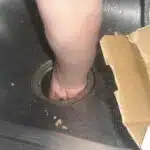
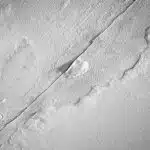
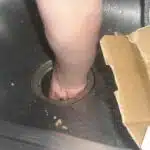
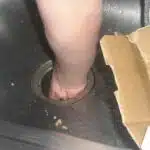

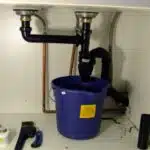
![How To Get Hair Out Of A Bathtub Drain 8 2/365 [Bathtub Drain]](https://green-life.blog/wp-content/uploads/2023/05/cOEu5edpkejq-150x150.jpg.webp)

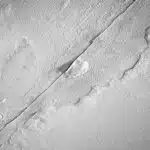


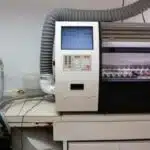




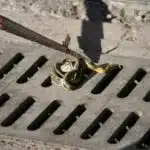

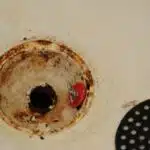

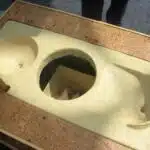
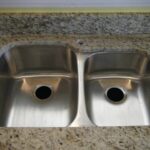
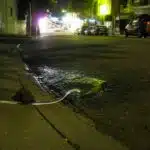

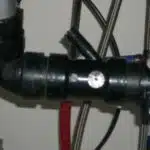

![How To Replace A Bathtub Drain In A Mobile Home 28 2/365 [Bathtub Drain]](https://green-life.blog/wp-content/uploads/2023/05/3ft8KAJsNnjq-150x150.jpg.webp)
